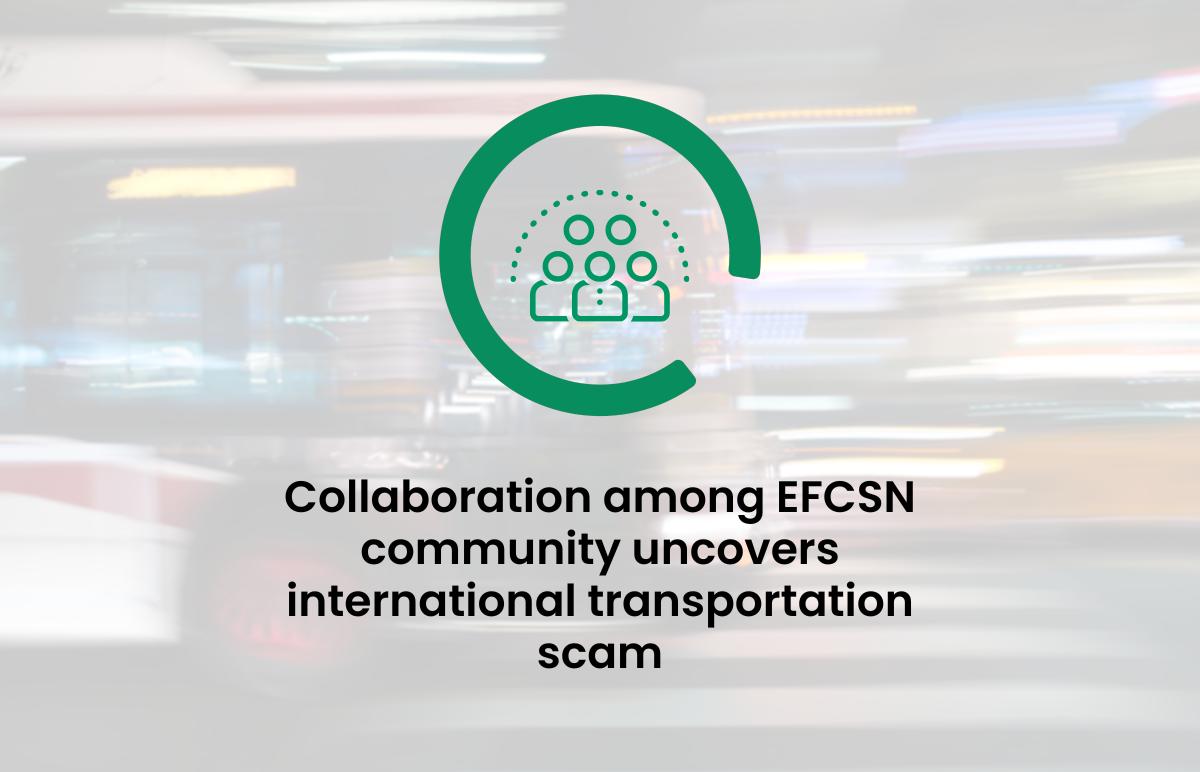
When EFCSN member Maldita.es became aware of a series of fake Facebook pages posing as public transportation authorities, they reached out to the broader fact-checking community. Bringing together organizations from all corners of Europe, the collective input of fact-checking organisations, including many EFCSN members, uncovered a widespread, international scam. Read the full investigation on Maldita.es’s website. The collaboration turned a local alert into a global exposé, showing what fact-checkers can achieve together.
We spoke with Marina Sacristán Hidalgo, Public Policy & Institutional Development Officer at Maldita.es, who led the investigation.
What first tipped you off about the network of fake Facebook pages posing as public transportation authorities?
Our community made us first aware of the scam. Maldita.es works with a WhatsApp chatbot where anyone can forward messages they come across and believe might be disinformation or scams for us to look into. And this was the case for the public transportation scam. The first register we have of a Facebook page of this kind is dated around the end of 2023 but, thanks to people flagging other similar cases, we were able to suspect a bigger network and start investigating.
How did you involve other fact-checking organizations in identifying similar scams in their countries?
Our first research effort was focused on these pages targeting Spanish cities but, while analyzing, we did detect name changes linked to foreign cities or a few pages affecting other countries. This is why, after releasing this first part of the investigation, we immediately forward it to all EFCSN members and other fact-checking organizations outside Europe, asking for any hints they could have on similar fraudulent pages in their countries. Everyone was very keen to share the information they had.
Did working with fact-checkers across borders help strengthen the investigation or reveal any unexpected patterns?
Dozens of organizations sent us examples of their published debunks on similar cases or links to Facebook pages acting on their countries. This was crucial for Maldita’s effort to assess the global scale of the scam.
Because of how this scam works, the fraudulent Facebook pages usually follow the same name structure (e.g. ‘Transporte Público en A Coruña’, ‘Öffentliche Verkehrsmittel in Koblenz’, or ‘Transports Publics de Avignon’). The examples that fact-checking organizations provided us with allowed us to overcome the language barrier and assess this name structure for many different countries. From there, we were able to collect a first batch of available Facebook pages and find new patterns to pull from to keep uncovering the network.
What are the risks posed by these types of impersonation campaigns? Is this part of a broader pattern we should be looking out for?
In this scam, Facebook pages were very accurately designed for local audiences, using the exact name of the city transport card or photos of the buses of the alleged location. Anyone is vulnerable to fall for these pages and introduce their personal and banking information. Maldita.es has received messages from victims of this scam and how they found suspicious charges in their credit cards afterwards.
One of our main concerns is Meta’s inability to act in such a clear campaign. Public services being targeted, admins located anywhere but in the country supposedly operating, and the use of Meta Ads (which in most cases were moderated) to boost the reach of the scamming posts. On top of that, Maldita.es reported through different channels the existence of these pages in Spain.
Fact-checking organizations are well-equipped to detect campaigns of this nature, not just scams, but also incidents specifically targeting local or national audiences. Our teams possess essential local and linguistic expertise and work closely with communities that help flag suspicious content, allowing us to assess what is truly reaching citizens. Furthermore, collaboration among organizations reveals the broader scale of these campaigns and helps uncover larger patterns and connections.